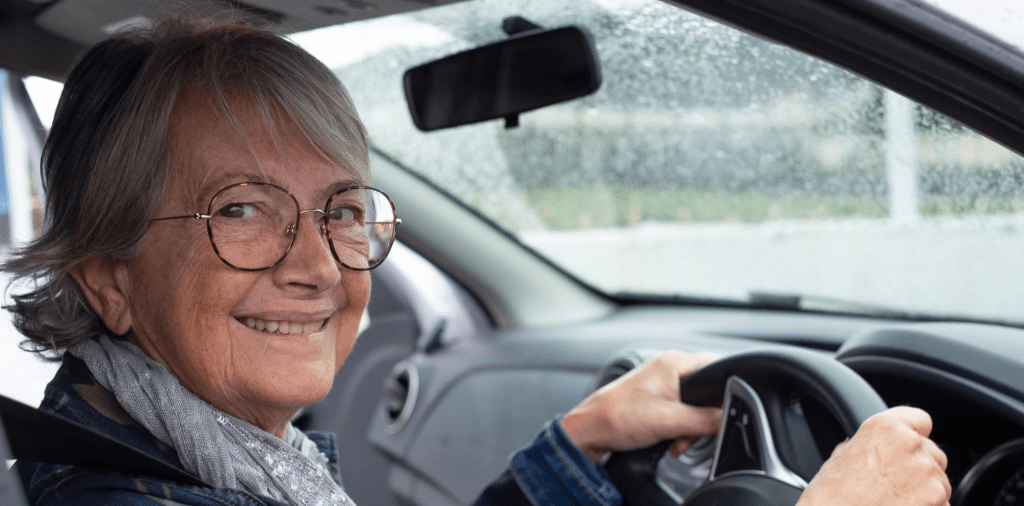
At present, the UK does not impose an upper age limit for drivers. Regardless of whether you’re 17 or 78, if you possess a valid driving licence, you’re permitted to drive.
- The Current Regulations
- The Main Arguments
- How Would a cut-off Age Work?
- A cut-off Age for Driving: The Verdict
However, this policy has stirred debate over the years. If you’ve read recent newspapers or browsed trending topics on Twitter, you’ll be aware of the ongoing discussions about older drivers. The conversation became even more prominent when Prince Philip was involved in a car accident at the age of 97.
The Current Regulations
Before delving into the debate over whether there should be an upper age limit for driving, it’s essential to understand the existing regulations and procedures in place.
The DVSA (Driver and Vehicle Standards Agency) recognises that age might have an impact on a person’s driving capabilities. Consequently, once a driver reaches the age of 70 in the UK, there’s a requirement to reapply for a driving licence every 3 years. In contrast, for those below the age of 70, this reapplication is only needed once every 10 years.

At this juncture, you might think, “Well, that settles it!” But there’s more to the story. While reapplication is mandatory, it doesn’t entail retaking a driving test. This means that there’s no practical demonstration or evidence required to show that the applicant remains skilled and safe behind the wheel.
The process predominantly revolves around updating one’s personal information, ensuring you still meet the requisite eyesight standards and disclosing any relevant medical conditions.
Read more on the eyesight rules from the DVSA
This procedure raises concerns for some, as it means that individuals whose driving abilities may have diminished due to age can still have their licences renewed without any rigorous assessment of their current driving proficiency.
The Main Arguments
Debates on limiting elderly individuals from driving encompass a wide range of perspectives. To maintain brevity, we’ll delve into some of the primary arguments presented by both proponents and opponents.
FOR: Age-related health changes can impact critical driving skills.
As we age, it’s inevitable that certain bodily functions and skills start to deteriorate, even if not at the same pace for everyone. This natural ageing process can affect pivotal skills for driving such as eyesight, reaction times, and mobility.
For instance, stiffer joints can make quick manoeuvres more challenging, and declining eyesight might compromise night driving or reading road signs from a distance.

Crucially, the ability to spot and react to hazards on the road is paramount for safe driving, which is underscored by its emphasis on the hazard perception portion of the driving theory test.
If your capability in this aspect diminishes, it could endanger not only the driver but also fellow road users. Moreover, statistics underscore the vulnerability of older individuals in accidents; they are over twice as likely to perish in crashes compared to their younger counterparts.
This heightened risk is due to the fragility of ageing bodies and a slower recovery rate. Hence, considering an age limit for driving could enhance road safety for all.
AGAINST: Young drivers are statistically riskier on the road.
While there might be occasional anecdotes of elderly drivers displaying a lack of awareness, such as driving long distances without realising a tyre is missing, young drivers statistically pose more significant risks. This is evident in their higher insurance premiums.

To illustrate, a report from the Older Drivers Task Force showed that in 2012, only 7% of drivers involved in pedestrian fatalities on UK roads were over 70. Their findings suggested that drivers under 25, and particularly under 40, posed considerably higher risks.
However, such statistics might not give the full picture. Older drivers typically spend less time driving than younger ones, which could account for their involvement in fewer accidents.
FOR: The current system’s reliance on drivers’ self-assessments is flawed.
Currently, the onus largely falls on individuals to evaluate and decide if they remain fit to drive. The pitfall here is that many might not recognise deteriorating skills until a mishap occurs. The General Medical Council, recognising potential shortcomings, issued guidelines in 2016 for doctors on this matter.

While patients are reminded of their responsibility to inform the DVLA of pertinent medical conditions, doctors are also encouraged to notify the DVLA if they believe a patient is unfit to drive, even without the patient’s consent.
However, this additional layer of safeguard only works if individuals regularly consult their doctors, which isn’t always the case. Thus, there are concerns about the efficiency of the current system in communicating crucial medical updates to the DVLA.
AGAINST: Driving provides invaluable independence for many elderly individuals.
Revoking an elderly person’s driving licence might essentially serve as an essential lifeline. Being able to drive often signifies more than mere transportation; it provides a sense of autonomy, independence, and freedom, especially in areas with limited public transport.

Instituting blanket bans could inadvertently discriminate against those still fully capable of safe driving. Everyone’s capabilities, influenced by genetics and lifestyle, differ—even among individuals of the same age. Consequently, designating a fixed “maximum driving age” becomes a challenging and potentially arbitrary decision.
How would a cut-off age work?
Searching for a system that’s both effective and equitable can be challenging. How does the UK compare with international practices when it comes to managing older drivers?
Japan offers an intriguing model. There, drivers aged 75 and above are required to renew their licence every three years.

This renewal isn’t merely administrative; it entails passing a cognitive test to ensure mental alertness.
Moreover, there are discussions about potentially restricting older drivers to cars equipped with state-of-the-art automatic braking systems. This technological aid might help in reducing the risk of accidents due to delayed reactions.
Perhaps the solution doesn’t lie in a rigid age cut-off but in periodic evaluations tailored to assess specific skills. The Older Drivers Task Force in the UK has also leaned towards this perspective. While they believe starting medical declarations at the age of 70 is prematurely cautious, they advocate for tangible proof of an eyesight examination during the licence renewal process.
The current method relies heavily on self-reporting, which may not always capture a decline in visual acuity or other related issues. Implementing regular, mandatory evaluations might offer a balanced approach, ensuring road safety while allowing elderly individuals the freedom and independence that comes with driving.
A cut-off age for driving: The verdict
Taking a stance on such a multifaceted issue isn’t straightforward, and both sides present compelling arguments. One thing is clear: ageing is a highly individualised process. Thus, implementing a strict age limit for driving may be seen as arbitrary and possibly unjust.
A more nuanced approach might be to introduce a tailored assessment for individuals beyond a particular age threshold. This wouldn’t mean they’re unfit to drive, but rather it’s a measure to ensure continued safety on the roads.

The exact nature and parameters of this assessment would be a matter for the DVSA to determine, and they might draw inspiration from some of the models and suggestions discussed previously.
If you’ve reached a certain age and feel your driving skills might not be as sharp as they once were, it’s wise to act prudently. Consider momentarily stepping away from driving and consulting with your GP. While there’s a strong chance you’re still perfectly capable of driving safely, it’s a step that underscores the principle: better safe than sorry!


